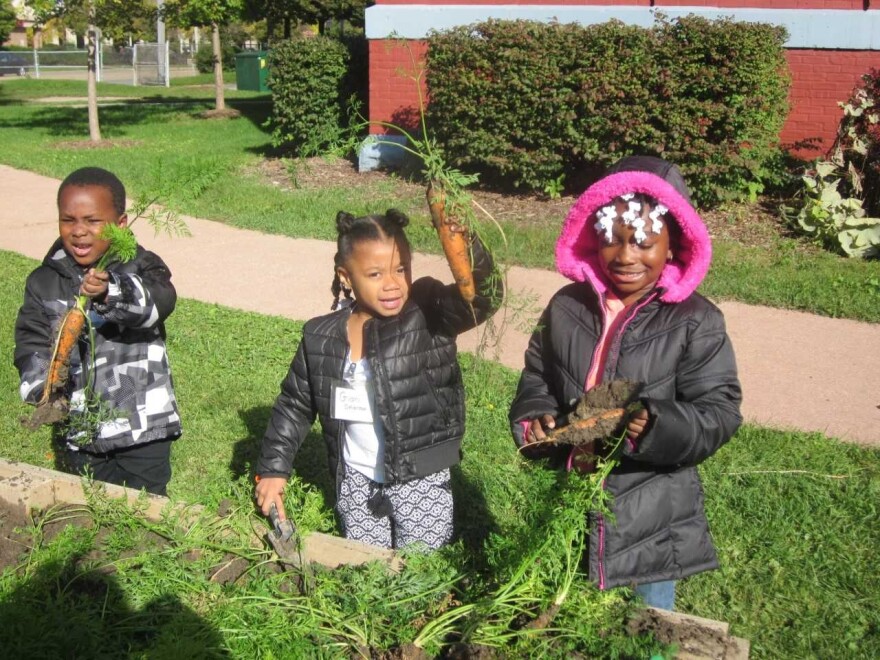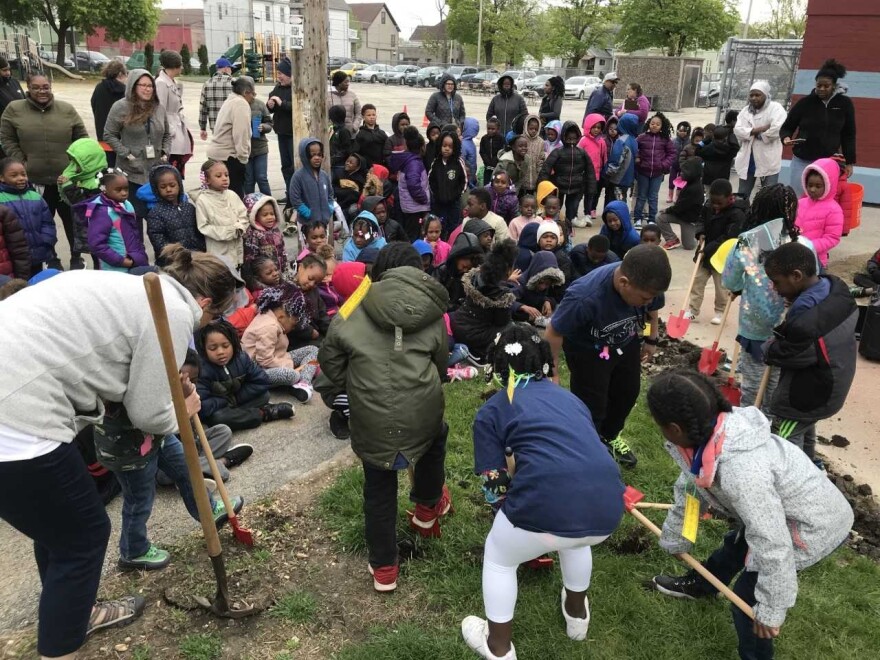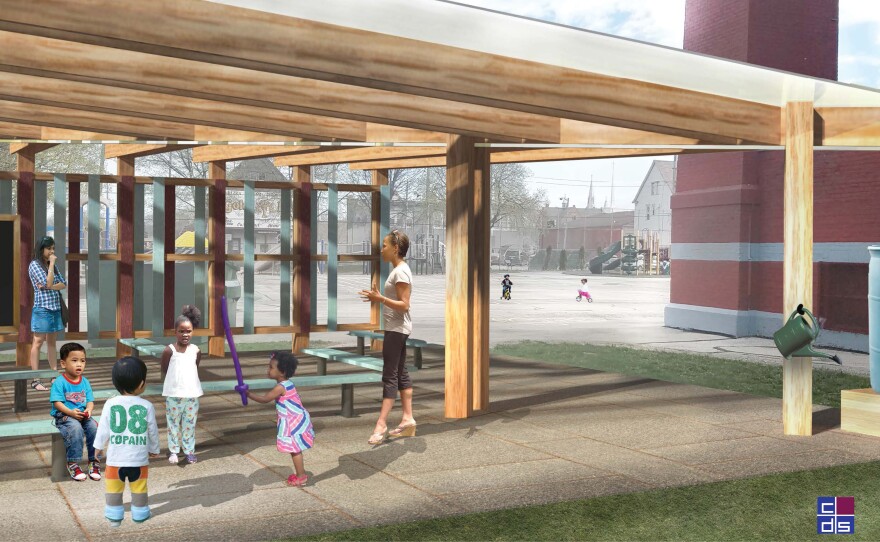The story of Starms Early Childhood isn't unique in Milwaukee: The Milwaukee Public Schools' building at 36th and Burleigh Streets is more than 100 years old and until recently, its playground was dominated by asphalt.
But that’s about to change thanks to a green infrastructure project.
Lisa Misky can't wait. She's taught at Starms for 21 years. Over the years, she and her colleagues gradually added some green to the children's world. They put in a perennial garden bed in the front with the help of small grants.

“We just got raised garden beds a couple of years ago to do farm-to-table. The kids absolutely love that because they’re harvesting their own fruit and vegetables and then we’re using it in the classrooms,” Misky says.
But all of that life was at the front of the school. The back — where “play” was supposed to happen — remained a vast, sometimes very hot, sea of asphalt. Misky says occasionally when a heavy rain storm hit, stormwater filled the school’s basement.
“We have a huge heat scape that would collect so much water, we were flooding everywhere. So, we were having to evacuate. To take 300 3, 4 and 5 year olds off campus, it’s not safe and it’s not fun," she says.
Misky and her colleagues started dreaming about replacing the asphalt with an outdoor classroom. They formed a green team and started sketching. While Misky's creative, she says she couldn’t imagine how her school would come up with the money to make the plan a reality.
“Who’s going to give money to 53205? It’s just a hard sell for an inner-city school,” Misky says.
"Who's going to give money to 53205? It's just a hard sell for an inner-city school." - Lisa Misky
Enter Justin Hegarty. He’s the executive director of a nonprofit called Reflo, which helps bring community-based water projects to life. Hegarty also manages the Green Schools Consortium of Milwaukee. It formed nearly five years ago with the hope of bringing the dreams of places like Starms to life.
Hegarty says green infrastructure funding comes from a variety of sources, including as the Milwaukee Metropolitan Sewage Department, U.S. Fish and Wildlife Service, and the Fund for Lake Michigan.
“[The consortium] really started with stormwater green infrastructure, reduced combined sewer overflows and basement flooding,” Hegarty says. “And we’ve been able to layer on top some of the really great outdoor educational elements, the healthy food access and some of the recreational components as well,” Hegarty says.
Three other MPS schools are joining Starms with inaugural schoolyard transformations: Hawley Environmental School, Longfellow School, and A.E. Burdick School. Each year, the consortium plans to help more schools.
It's Angeline Koch's job to manage all of MPS' projects. She's the district's new (and first) sustainability projects specialist.

“It’s wonderful to see the community building around these initiatives that started by the hard working teachers and the students at the schools. What’s really beautiful is that this is ground up, which lends to long-term success,” Koch says.
When I visited the school, it still took imagination to see Starms outdoor classroom. The asphalt was gone, and workers were moving gravel and dirt.

But teacher Lisa Misky can see it. Starting with how her kids will be experiencing the watershed: three slides that symbolize Milwaukee’s three rivers (Menomonee, Milwaukee, and Kinnickinnic rivers).
“That was just a beautiful idea of teaching about flow. The slides will converge and go right into our permeable Lake Michigan,” Misky says.
She says she can already see smiles filling her students’ faces when they watch both vegetables and their roots grow inside a green wall made of Plexiglas.
Starms Early Childhood isn't the only school striving to be green. On Thursday, hundreds of teachers are expected to converge and encourage one another at Brown Street Academy – the site of another outdoor classroom – for the fourth annual Green Schools Conference.
Have an environmental question you'd like WUWM's Susan Bence to investigate? Submit below.
_






